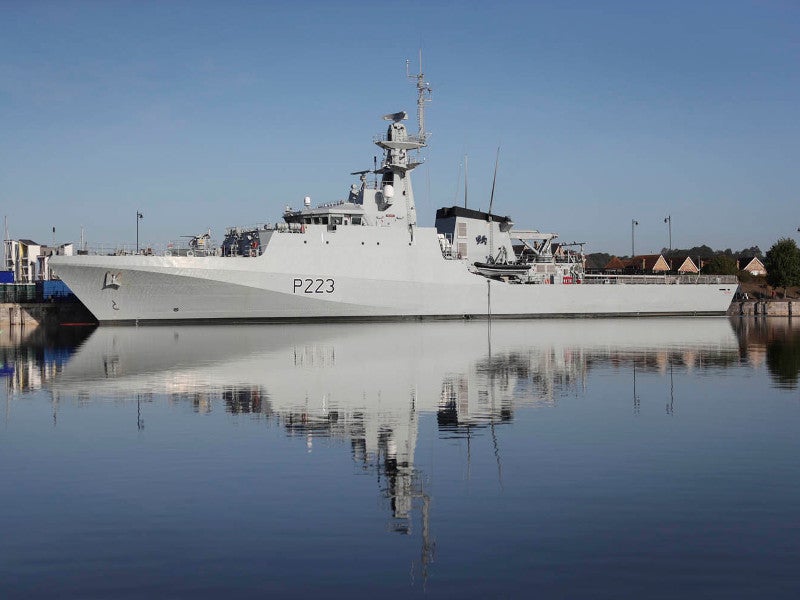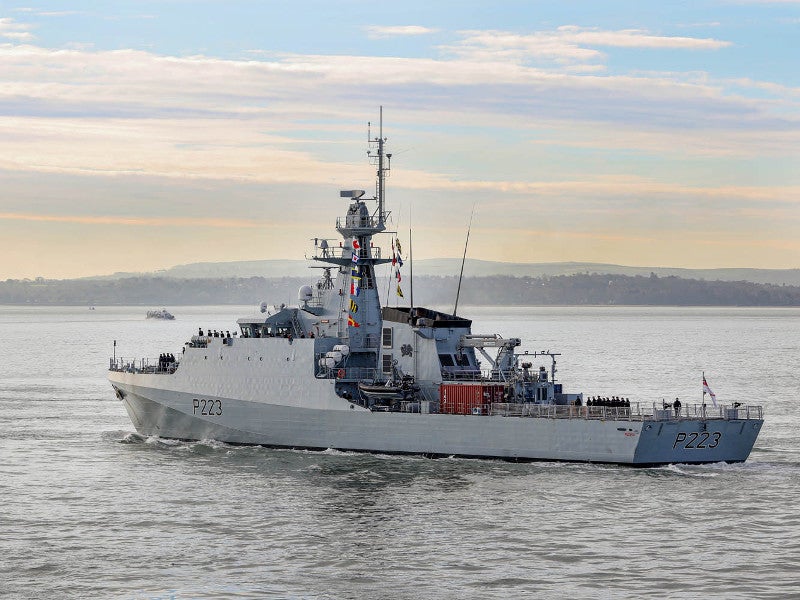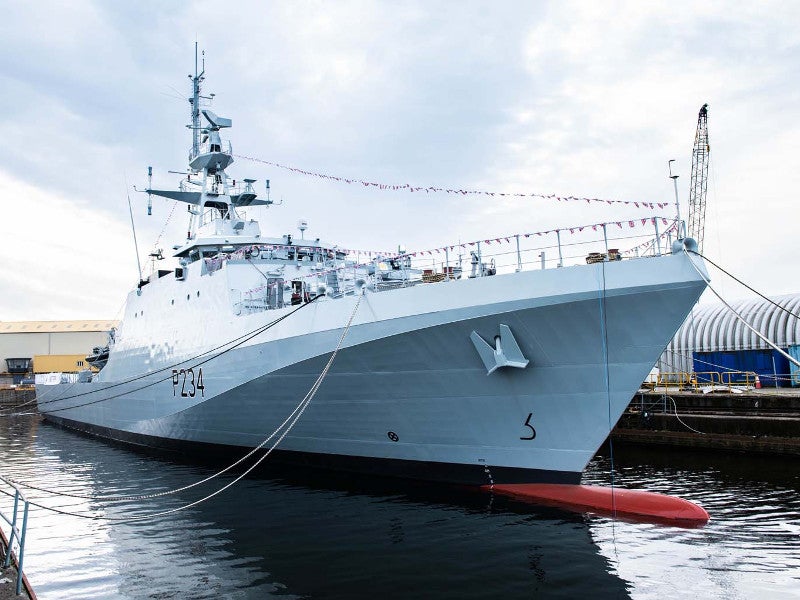BAE Systems is building a new class of five 90m offshore patrol vessels (OPVs) for the second batch of the British Royal Navy’s River-class ships.
The offshore patrol vessel is intended to carry out a range of economic exclusion zone management tasks such as maritime security, border control, routine patrols, and anti-smuggling. It will also facilitate counter-terrorism and piracy, fishery protection, and effective disaster relief. It can also be used for the protection of natural resources.
BAE Systems was awarded a £348m ($529m) contract by the UK Ministry of Defence to build three new OPV class ships for the British Royal Navy in August 2014. The multi-million contract is expected to create more than 800 jobs in Scotland.
A £287m ($362m) contract for the construction of two additional River-class Batch-2 offshore patrol vessels was awarded in December 2016. The UK Navy has commissioned four of the new class of vessels, with the fifth one expected to join the fleet after the completion of construction.
TenCate Advanced Armor completed the installation of protective armour solution on the River Class vessels in January 2020.
Construction details of 90m offshore patrol vessels
Construction of the first patrol ship in the class, HMS Forth, began in Glasgow, Scotland, in October 2014 and the vessel completed its sea trials in December 2017. HMS Forth was accepted by the Royal Navy in January 2018 and replaced HMS Clyde as the permanent guardship of the Falkland Islands.
The first steel for the second ship HMS Medway was cut in June 2015 and the christening ceremony took place in October 2017. The ship was inducted into the fleet in September 2019 and was sent on a deployment to the Atlantic Patrol Tasking (North) mission in the Caribbean. Construction on the third vessel HMS Trent began in October 2015 and its christening ceremony was held in March 2018. Trent joined its sister vessels following a commissioning ceremony in August 2020 and set sail for the Mediterranean on its first operational deployment on the same day.
The fourth OPV in the Batch 2, HMS Tamar, was welcomed into the fleet in June 2020. The fifth and last ship, HMS Spey, which was christened in October 2019, is nearing the end of construction in Scotland.
90m OPV design and features
The new offshore patrol vessel is an evolution of the 80m River Class vessels used by the British Royal Navy. The patrol ship features a highly versatile, flexible design, and delivers more efficient operations.
It has a length of 90.5m, a width of 13m and a displacement of 2,000t. It provides accommodation for 60 personnel, including a crew of 34. The vessel can also carry up to 50 embarked troops or passengers.
The OPV boasts of an enhanced flight deck at the aft to operate the latest Merlin helicopters. It is capable of carrying two Pacific 24 rigid inflatable boats (RIBs). A 16t crane is attached to lift equipment. The vessel also features large storage, accommodation, and medical facilities.
BAE Systems’ new state-of-the-art shared infrastructure operating system is installed in the ship to deliver simpler operations. It employs virtual technologies to integrate the weapon, sensor, and management systems for the complex warships.
The vessel is be equipped with BAE Systems’ CMS-1 combat system to provide planning, tactical picture compilation, situational awareness, decision-making, and control of weapons from its intuitive consoles in littoral operations. The combat system also assists Nato and other coalition missions.
Armament
The main armament of the British Royal Navy’s new 90m offshore patrol vessel is a 30mm cannon. The vessel is fitted with small-calibre machine guns. It can also be mounted with a 12.7mm gun location and a 25mm secondary armament on both the port and starboard sides.
OPV Sensors and communications
The 90m OPV can be equipped with X-band and S-band navigation radars, air and surface surveillance radar, electro-optic system electronics, and fire monitors.
The communications systems include a high-frequency transceiver, very high-frequency transceiver, very high-frequency marine band, and global maritime distress safety system.
90m OPV propulsion and performance
The new 90m offshore patrol vessel is powered by two diesel engines rated at 7,350kW each. The propulsion system also consists of two Wärtsilä propellers.
The patrol ship can sail at a maximum speed of 24k. It can perform ocean patrolling within a range of 5,500nm and has an endurance of 35 days.
Design variants of 90m OPV
The 90m OPV ship can be configured with a variety of equipment according to the operational requirements of navies across the world.
BAE Systems signed a technology transfer agreement with Bangkok Dock for the supply of design and technology of the 90m OPV for the Royal Thai Navy in June 2009.
Construction of the vessel named HTMS Krabi began in August 2010 and commissioning took place in August 2013.
BAE Systems also built and delivered three 90m OPV patrol ships with a similar design to the Brazilian Navy under a £133m ($202m) contract.










